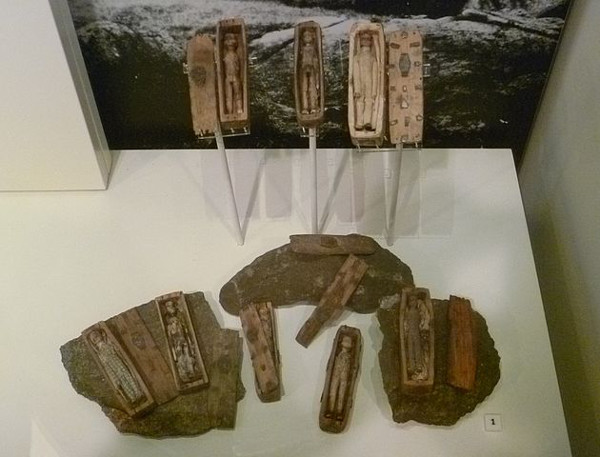
In early July 1836, three boys searching for rabbits’ burrows near Edinburgh came upon some thin sheets of slate set into the side of a cliff. On removing them, they discovered the entrance to a little cave, where they found 17 tiny coffins containing miniature wooden figures.
According to the Scotsman‘s account later that month, each of the coffins “contained a miniature figure of the human form cut out in wood, the faces in particular being pretty well executed. They were dressed from head to foot in cotton clothes, and decently laid out with a mimic representation of all the funereal trappings which usually form the last habiliments of the dead. The coffins are about three or four inches in length, regularly shaped, and cut out from a single piece of wood, with the exception of the lids, which are nailed down with wire sprigs or common brass pins. The lid and sides of each are profusely studded with ornaments, formed with small pieces of tin, and inserted in the wood with great care and regularity.”
Some accounts say that the coffins had been laid in tiers, the lower appearing decayed and the topmost quite recent, but Edinburgh University historian Allen Simpson believes that all were placed in the niche after 1830, about five years before the boys discovered them.
Who placed them there, and why, remain mysterious. Simpson suggests that they may be an attempt to provide a decent symbolic burial for the victims of murderers William Burke and William Hare, who had sold 17 corpses to local doctor Robert Knox in 1828 for use in anatomy lessons. But 12 of Burke and Hare’s victims were women, and the occupants of the fairy coffins are all dressed as men.
So investigations continue. The eight surviving coffins and their tiny occupants are on display today at the National Museum of Scotland.
